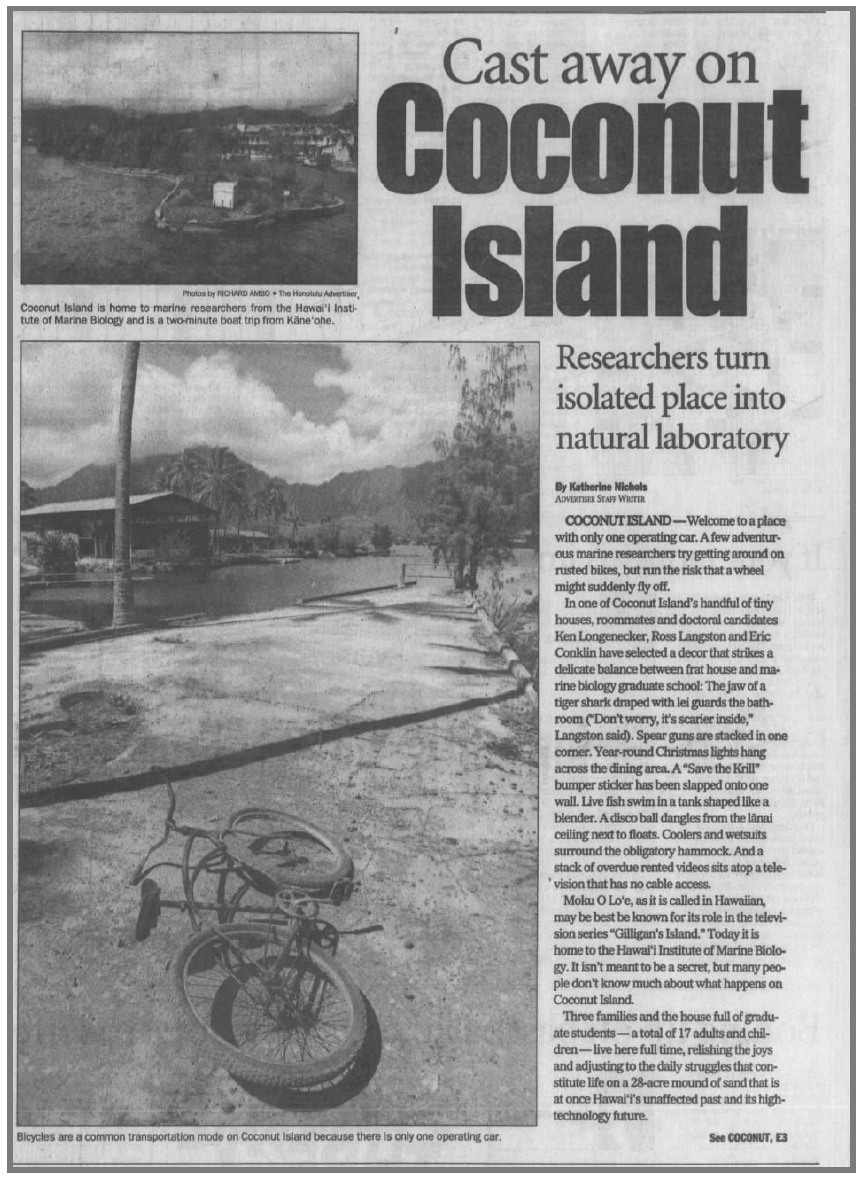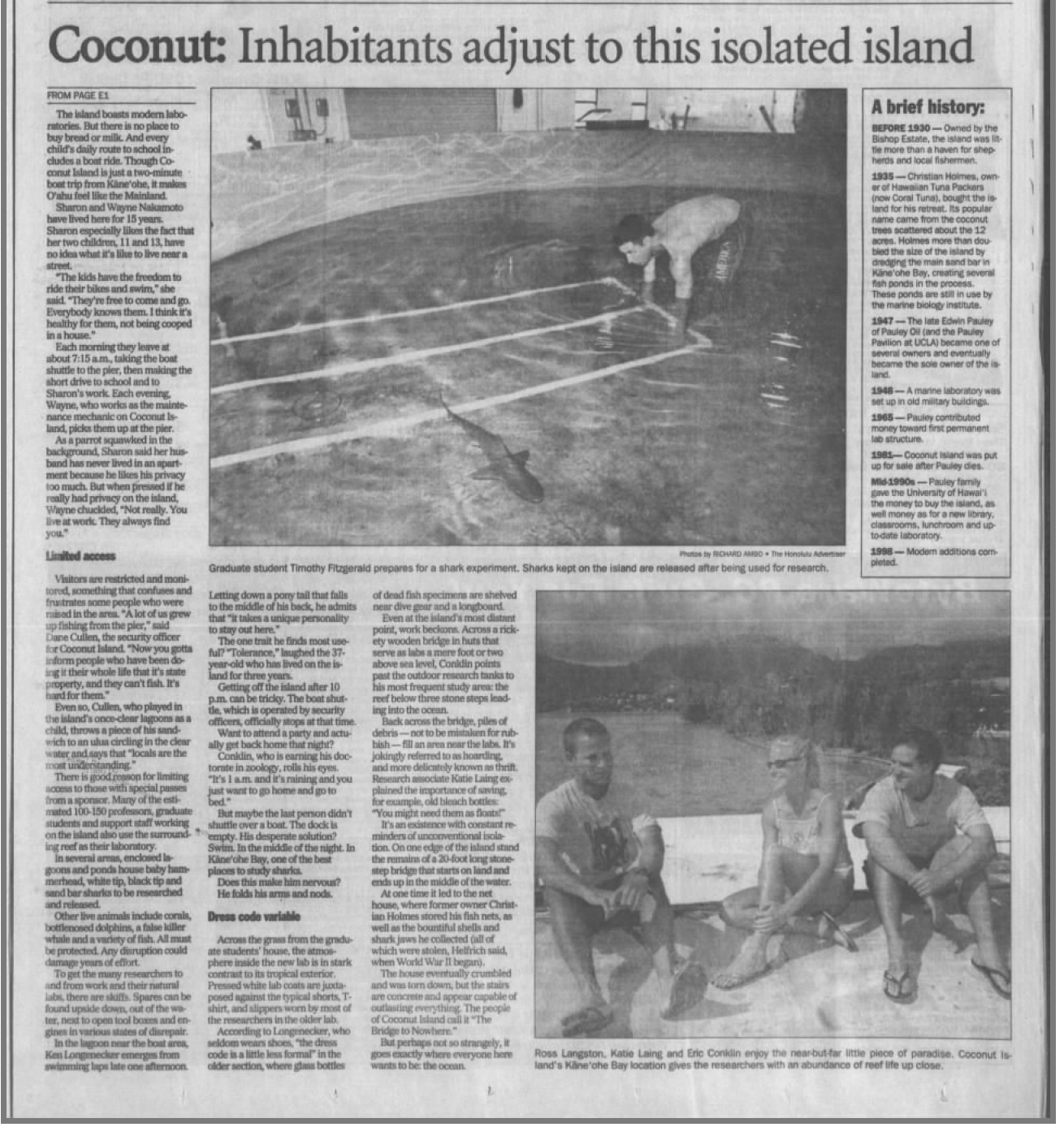Welcome to a place with only one operating car. A few adventurous marine researchers try getting around on rusted bikes, but run the risk that a wheel might suddenly fly off. In one of Coconut Island’s handful of tiny houses, roommates and doctoral candidates Ken Longenecker, Ross Langston and Eric Conklin have selected a decor that strikes a delicate balance between frat house and marine biology graduate school: The jaw of a tiger shark draped with lei guards the bathroom (“Don’t worry, it’s scarier inside,” Langston said). Spear guns are stacked in one corner. Year-round Christmas lights hang across the dining area A “Save the Krill” bumper sticker has been slapped onto one wall.
Live fish swim in a tank shaped like a blender. A disco ball dangles from the lanai ceiling next to floats. Coolers and wetsuits surround the obligatory hammock. And a stack of overdue rented videos sits atop a television that has no cable access. Moku O Lo’e, as it is called in Hawaiian, may be best be known for its role in the television series “Gilligan’s Island.” Today it is home to the Hawaii Institute of Marine Biology.
It isn’t meant to be a secret, but many people don’t know much about what happens on Coconut Island. Three families and the house full of graduate students a total of 17 adults and children live here full time, relishing the joys and adjusting to the daily struggles that constitute life on a 28-acre mound of sand that is at once Hawaii’s unaffected past and its high-technology future….

